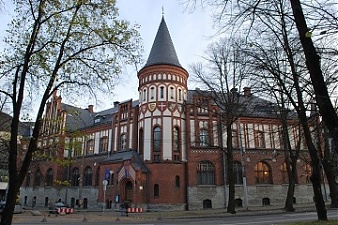Banks, Direct Speech, Economics, Estonia, Financial Services
International Internet Magazine. Baltic States news & analytics
Saturday, 03.01.2026, 01:42
Eesti Pank forecasts that the economy will start to lose momentum after running at full power
 Print version
Print version |
|---|
The economy will grow more slowly. The reduced loan burdens and increased savings of companies and households do not give any grounds to expect that a sharp downturn would start from the Estonian private sector. At the same time though, the economy cannot run at full power for a long time without losing competitiveness since rising wage costs will force companies to raise prices. It is notable that the assessment of companies of their own competitiveness has already started to deteriorate. Economic growth of 4.2% in the third quarter was a positive surprise, but it was boosted by a few one-off factors.
The labour market reacts to changes in the economy with a lag. When the last economic cycle ended in 2007, it was more than six months after growth started to stutter in the economy before unemployment started to rise, and wages reacted even later. The unemployment rate indicated by surveys was 3.9% in the third quarter of this year, which is the lowest rate ever, but the rise in registered unemployment and the decline in unfilled vacancies indicate that demand for labour has become less intense. Businesses confirm this.
Demand for additional labour will decline in the coming years, but wage pressures will remain. Under these circumstances the yearly rise in the average wage will decline to 5%-6%. Unemployment will rise in the coming years as the economy will cool, while more people than before will enter the labour market but not all of them will find work. Labour market activity will be increased by the gradual rise in the retirement age, improving health, and the general growth in the level of wages, which encourages people to work.
Inflation will remain modest. The main factor raising prices will be the increase in wage costs, which predominantly pushes prices upwards for services. As wages grow more slowly though, services inflation will fade, and as the growth in the prices of imported products will be restrained in the coming years and tax rises will have less of an impact than earlier, then the growth in consumer prices will fall below 2%.
Despite the slower growth in the economy, government revenues from taxation will be higher than usual. Tax revenues will be boosted in the coming years by several important factors, because the largest share of the population ever is in employment, the unemployment rate is low even as it rises a little, and the growth in wages remains rapid and consequently so does growth in consumption.
The budget deficits built up during the good times should be eliminated faster than it has been planned. The government’s plan is to reduce the structural deficit that has deepened in recent years by only the minimal permitted amount of 0.5 percentage points of GDP a year. This means that fiscal policy will remain too loose in the years ahead. Eesti Pank finds that the general government budget should be returned to structural balance as soon as possible while revenues are still higher than usual.
- 25.01.2021 Как банкиры 90-х делили «золотую милю» в Юрмале
- 29.12.2020 В Rietumu и в этот раз создали особые праздничные открытки и календари 2021
- 29.12.2020 Lithuanian president signs 2021 budget bill into law
- 29.12.2020 Number of new companies registered in Estonia up in 2020
- 29.12.2020 Президент Литвы утвердил бюджет 2021 года
- 28.12.2020 Рынок недвижимости Эстонии осенью начал быстро восстанавливаться
- 28.12.2020 Tartu to support students' solar car project
- 28.12.2020 Owner of Kunda Nordic Tsement to install full-scale CCS facility in Norway
- 28.12.2020 New Year Cards and Calendars of Rietumu Bank presented
- 23.12.2020 В 2019 году выросли прибыль и оборот Eesti Pagar








 «The Baltic Course» Is Sold and Stays in Business!
«The Baltic Course» Is Sold and Stays in Business!

